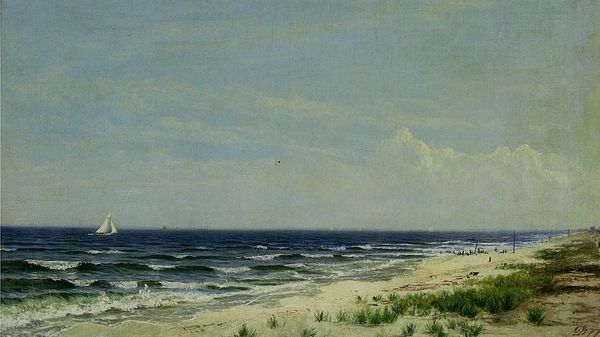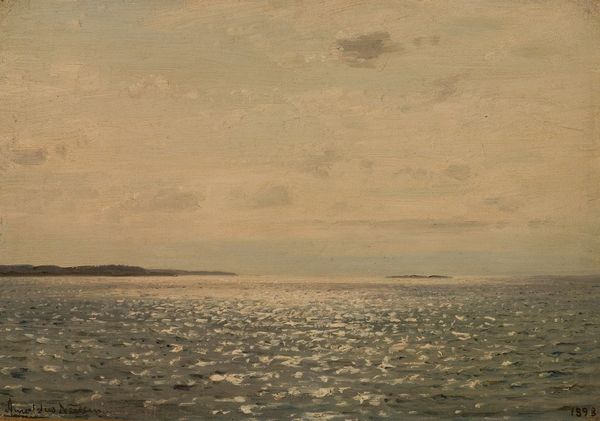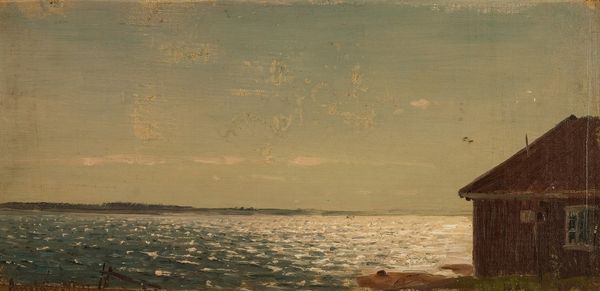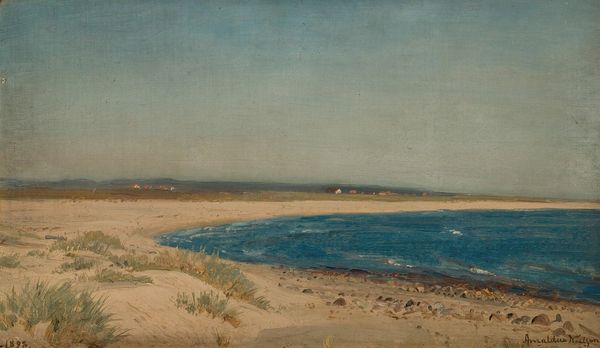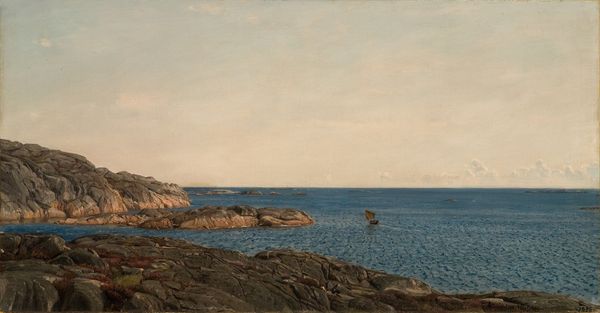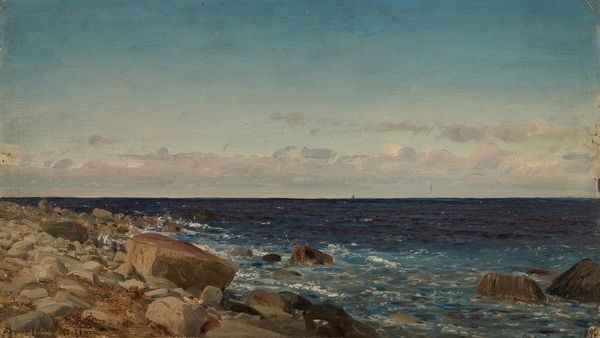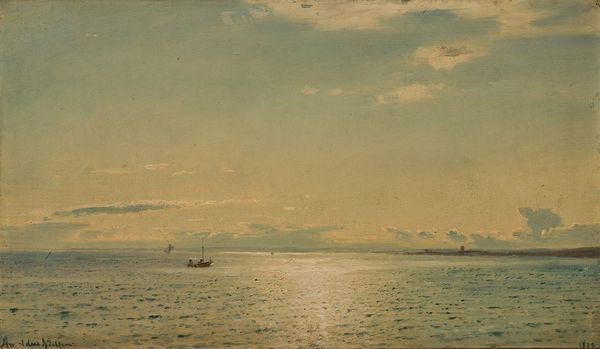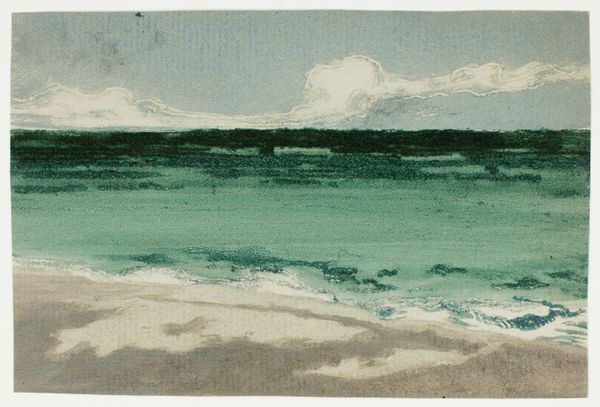
#
sky
#
acrylic
#
abstract painting
#
rough brush stroke
#
charcoal drawing
#
possibly oil pastel
#
oil painting
#
ocean
#
acrylic on canvas
#
underpainting
#
painting painterly
#
watercolor
#
sea
Dimensions: 45.7 x 91.4 cm
Copyright: Public domain
Curator: Here we have John Frederick Kensett’s "Eaton's Neck, Long Island," an oil on canvas completed in 1872. It is currently part of the Metropolitan Museum of Art’s collection. Editor: My first impression is the painting's overwhelming sense of serenity, achieved through the vast expanse of the sky, the tranquil sea, and the smooth curve of the beach. Curator: Kensett belonged to the second generation of Hudson River School painters, an art movement deeply rooted in American cultural identity and expansionism. These paintings became a point of debate about what defines ‘American’ art amid international aesthetic movement. Editor: Absolutely, and formally we can see that reflected in the clear horizon line and careful balancing of tonal values. The limited color palette emphasizes light and atmosphere above all else, pushing the limits of luminosity. Curator: This artwork appears after the Civil War, during the rapid industrialization. Therefore, his work reflects a desire to return to the nation's past, an almost pastoral embrace of natural beauty amid escalating environmental transformation and economic disparity. These pieces function not only as a nostalgic image, but also become political statements in how we approach nature as an essential national heritage and commodity. Editor: Yes, and one can clearly see the almost seamless gradations in tone. From a formal perspective, the soft edges and subtle blending make the brushwork appear almost invisible, leading to a sense of meditative contemplation, rather than the stark political undertones we often overlook. Curator: These seascapes were luxury commodities during the Gilded Age. Think of them not just as seascapes, but social landscapes reflecting the values and preoccupations of a society undergoing intense changes. These function as social barometers. Editor: Considering those forces at play, looking again, there is something unsettling about the composition’s stillness. Almost like an anticipation building to some event we cannot perceive with such smooth gradation in place. The texture here speaks volumes once its relationship with external pressure becomes apparent. Curator: Precisely. I’m glad we moved past aesthetics, which sometimes functions only to obscure how we relate with political-economic elements of the work and our reality. Editor: And by looking past pure formal analysis to contextualize his subject matter, the image of the seascape emerges both more grounded and yet also even more complex.
Comments
No comments
Be the first to comment and join the conversation on the ultimate creative platform.
